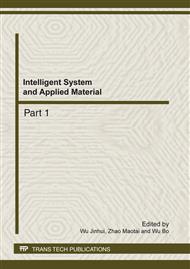p.587
p.592
p.596
p.602
p.607
p.612
p.617
p.622
p.626
Modelling and Analysis of Capacitive Effects in a High Frequency Coaxial Transformer
Abstract:
A new model is proposed for analyzing the capacitive effects in a newly developed high frequency coaxial transformer (HFCT). The proposed model can describe both the electric energy storage and common-mode (CM) electromagnetic interference (EMI) noise behaviors of a transformer, considering the voltage distribution in the HFCT windings. To determine the parameters of the model, a parasitic capacitance network is developed to describe the HFCT’s real winding’s structure, and the distributed parasitic capacitances of the network are evaluated using FEM based on the theory of capacitances in a multi-conductor system. The calculated inter-capacitance of the HFCT is in good agreement with the experimental results.
Info:
Periodical:
Pages:
607-611
Citation:
Online since:
February 2012
Authors:
Price:
Сopyright:
© 2012 Trans Tech Publications Ltd. All Rights Reserved
Share:
Citation:


